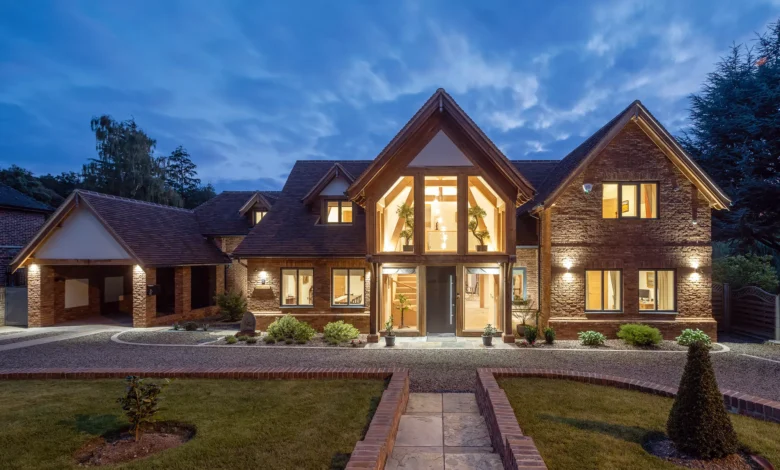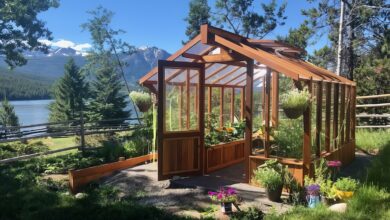Designing Your Dream Home: Key Elements to Consider for a Custom Build

Delving into the world of custom home building is an exciting venture. It’s a path paved with the potential to create not just a house but a personalized haven molded to your desires. Unlike buying a pre-built property, constructing a custom home offers unparalleled design, materials, and location freedom.
Still, it requires an intricate comprehension of the process, from the seed of an idea to laying the foundation stone. The custom-build journey allows for many choices at every turn, ensuring that the finished home reflects the owner’s taste and lifestyle.
However, with this great freedom comes significant responsibility—the responsibility to make informed decisions, manage budgets prudently, and navigate the various stages of construction with foresight and patience.
Setting Realistic Budgets for Your Dream Home
Beginning a custom project, such as crafting custom homes, starts with the sobering task of financial planning. Creating a dream home requires more than just aesthetic vision; it requires a grounded and comprehensive budget mindful of the many costs associated with building.
While the square footage, geographical location, and chosen finishes significantly dictate the bottom line, numerous hidden costs, such as landscaping, driveways, and unforeseen site challenges, can often be overlooked during the excitement of the planning phase.
The key to setting a reliable budget lies in thorough research, consulting with industry experts, and incorporating a financial cushion for unexpected occurrences. A budget that accounts for every eventuality lays a solid foundation for a project and helps maintain the delicate balance between your dream vision and what is realistically achievable.
Selecting the Perfect Location for Your Custom Home
The adage’ location, location, location’ holds particularly true when building a custom home. It’s the canvas on which you’ll paint your dream, influencing future home life and the home’s integration with the surrounding community and environment.
The idyllic site should complement your architectural choices, provide the necessary utilities, and adhere to zoning restrictions that may govern the property. It is vital to select a site mindful of the soil’s condition, the region’s climate factors, and the natural landscape to create a harmonious and sustainable home environment.
Researching these factors can often unveil hidden advantages and challenges, steering your design decisions toward a home that does not merely sit on the land but interacts with it symbiotic and enrichingly.
The Role of Architects and Designers
An architect or designer bridges a homeowner’s vision and a tangible blueprint for construction, including home renovations. Their role goes beyond drafting floorplans; they are artists and engineers crafting a vision into a livable space.
They advise on the feasibility of design ideas, offer alternatives when challenges arise, and ensure that the finished product meets the client’s expectations and adheres to building codes and environmental standards. Selecting an architect or designer who aligns with your vision and with whom you can build a robust and communicative relationship is paramount.
These partnerships result in a project that triumphs in aesthetic allure and silver integrity, embodying the finest aspects of design innovation while making them accessible and personal to the homeowner.
Innovative Materials and Technologies in Chomeowner’sBuilding
Custom home building has seen a renaissance with innovative materials and technologies. Choices in construction materials can significantly affect a home’s style, longevity, and environmental footprint. Modern advancements offer durable, eco-friendly options that do not compromise on beauty and clients’ variety of textures and finishes that can adapt to any design palate.
Smart home technologies infuse living spaces conveniently and efficiently, often through the simple tap of a smartphone screen. From automated lighting systems to advanced security features, technology can provide a luxurious and practical enhancement to the home. On the sustainability front, incorporating energy-efficient solutions, such as solar power and energy-star appliances, makes a positive environmental statement while often reducing long-term utility costs.
Navigating Building Codes home’srmits
One of the more technical and less glamorous aspects of home building is navigating the sea of building codes and permits that ensure the safety and legality of the construction. This regulatory landscape varies significantly from one municipality to another and requires due diligence and expertise to navigate successfully.
Unaccounted-for regulations can present costly and time-consuming obstacles, so it behooves the homebuilder to be well-versed in these matters or engage with seasoned professionals who are. Diligent adherence to these codes ensures that your home is built safely and to standard and streamlines the building process, preventing setbacks and ensuring that the project keeps to its planned timeline and budget.
Interior Design and Personalization
The interior of your custom-built home is a canvas for personal expression, showcasing aesthetic preferences through finishes, textures, and colors. This is where you can infuse your space with individuality, creating an ambiance that exudes your personality at every glance. Consider material and color choices carefully as they set the tone for each room; neutral tones provide a serene base, while bold accents can bring dynamism and energy.
Custom joinery, statement lighting, and artistic flourishes can reinforce your design theme and make your home unique. Just as important as the functionality of each space, the interior design contributes to the home’s overall atmosphere, influencing how people feel and interact within it. The key is to create a cohesive design that reflects your lifestyle while allowing for future adaptability.
The Construction Phase: What to Expect
Emotions often run high during construction as plans manifest into bricks and mortar. It is a time of energy and complexity as numerous craftsmen and professionals converge on a single goal: creating your custom home. This is when the well-laid plans are tested, and the strength of the groundwork laid during the design and planning phase is proved.
It’s crucial to stay flexible and communicative as the home takes shape. Regular meetings with the building team can ensure that any issues are promptly addressed and that progress aligns with your expectations. It’s a time of dynamic collaboration, where each decision can impact the quality and delivery of your dream home.
Long-Term Satisfaction with Your Custom Home
Finally, constructing a custom home is about achieving long-term satisfaction—a place that fulfills both current and future needs. The measures of well-chosen materials and skilled artistry contribute to your home’s longevity and enduring appeal.
The design of your home should accommodate your evolving lifestyle, enabling adjustments and updates without significant overhauls. A home that is a sanctuary today and a valuaIt’sasset tomorrow is the reward for all the careful planning and decision-making made during the building process.



